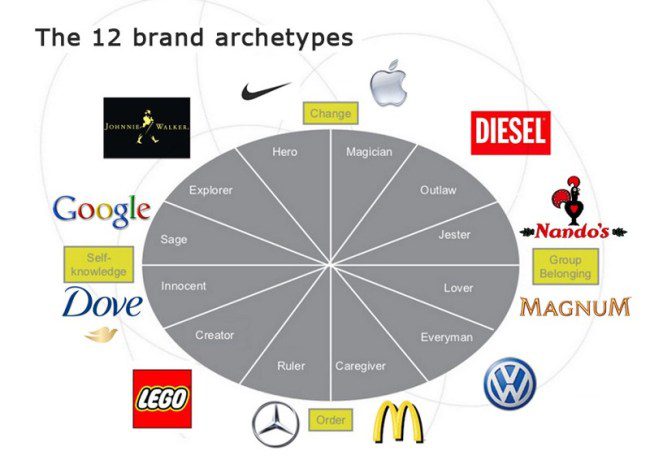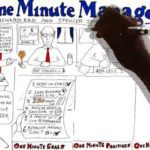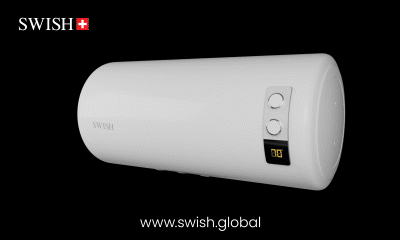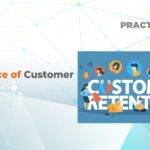The term “archetypes”, as it is used in marketing today, has its origins in Carl Gustav Jung’s theories. He believed that universal, mythic characters— archetypes—reside within the collective unconscious of people the world over. Archetypal images represent fundamental human desires and evoke deep emotions. 12 archetypes symbolize a basic human need, aspiration or motivation.
In other words, an archetype is a human type in its purest form: the classic hero, outlaw, ruler, etc. Each type has its own set of values, meanings and personality traits.
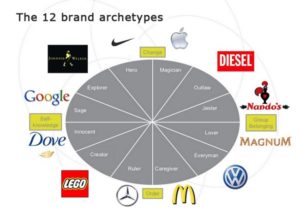
- The Innocent
Motto: Free to be you and me
Core desire: to get to paradise
Goal: to be happy
Greatest fear: to be punished for doing something bad or wrong
Strategy: to do things right
Weakness: boring for all their naive innocence
Talent: faith and optimism
The Innocent is also known as Utopian, traditionalist, naive, mystic, saint, romantic, dreamer.
The Innocent provides an identity for brands that:
- offer a simple solution to an identifiable problem are associated with goodness, morality, simplicity, nostalgia or childhood
- are low or moderately priced are produced by a company with straightforward values that need to be differentiated from brands with poor reputations.
- The Regular Guy/Girl
Motto: All men and women are created equal
Core Desire: connecting with others
Goal: to belong
Greatest fear: to be left out or to stand out from the crowd
Strategy: develop ordinary solid virtues, be down to earth, the common touch
Weakness: losing one’s self to blend in or for the sake of superficial relationships
Talent: realism, empathy, lack of pretense
The Regular Person is also known as The good old boy, everyman, the person next door, the realist, the working stiff, the solid citizen, the good neighbor, the silent majority
The Regular Person provides a good identity for brands:
- that give people a sense of belonging
- with an everyday functionality
- with low to moderate prices
- produced by a solid company with a down-home organizational culture
- that need to be differentiated positively from more elitist or higher-priced brands
Examples of Regular Person brands: IKEA
- The Explorer
Motto: Don’t fence me in
Core desire: the freedom to find out who you are through exploring the world
Goal: to experience a better, more authentic, more fulfilling life
Biggest fear: getting trapped, conformity, and inner emptiness
Strategy: journey, seeking out and experiencing new things, escape from boredom
Weakness: aimless wandering, becoming a misfit
Talent: autonomy, ambition, being true to one’s soul
The explorer is also known as The seeker, iconoclast, wanderer, individualist, pilgrim.
The explorer is a good identity for brands that:
- helps people feel free, nonconformist or pioneering
- is rugged and sturdy or for use in the great outdoors or in dangerous settings
- can be purchased from a catalog or on the Internet
- helps people express their individuality
- can be purchased for consumption on the go
- want to differentiate themselves from a successful regular guy/gal brand or conformist brand
- have an explorer culture that creates new and exciting products or experiences
Explorer brands would be Virgin, Jeep, Trope-Snacks, Marlboro, Bounty.
- The Sage
Motto: The truth will set you free
Core desire: to find the truth.
Goal: to use intelligence and analysis to understand the world.
Biggest fear: being duped, misled—or ignorance.
Strategy: seeking out information and knowledge; self-reflection and understanding thought processes.
Weakness: can study details forever and never act.
Talent: wisdom, intelligence.
The Sage is also known as The expert, scholar, detective, advisor, thinker, philosopher, academic, researcher, thinker, planner, professional, mentor, teacher, contemplative.
The Sage would be a good identity for brands:
- that provide expertise or information to customers
- that encourage customers to think
- that are based on new scientific findings or esoteric knowledge
- that are supported by research-based facts
- want to differentiate themselves from others whose quality or performance is suspect
Examples of Sage Identities: CNN, Gallup, McKinsey & Co.
- The Hero
Motto: Where there’s a will, there’s away
Core desire: to prove one’s worth through courageous acts
Goal: expert mastery in a way that improves the world
Greatest fear: weakness, vulnerability, being a “chicken”
Strategy: to be as strong and competent as possible
Weakness: arrogance, always needing another battle to fight
Talent: competence and courage
The Hero is also known as The warrior, crusader, rescuer, superhero, the soldier, dragon slayer, the winner, and the team player
The Hero could be good for brands:
- that are inventions or innovations that will have a major impact on the world
- that help people be all they can be
- that solve a major social problem or encourage others to do so
- that have a clear opponent you want to beat
- that that are underdogs or challenger brands
- that are strong and help people do tough jobs exceptionally well
- that need to be differentiated from competitors that have problems following through or keeping their promises
- whose customers see themselves as good, upstanding citizens
Examples of companies that express themselves like this archetype: Nike, Tag Heuer.
- The Outlaw
Motto: Rules are made to be broken
Core desire: revenge or revolution
Goal: to overturn what isn’t working
Greatest fear: to be powerless or ineffectual
Strategy: disrupt, destroy, or shock
Weakness: crossing over to the dark side, crime
Talent: outrageousness, radical freedom
The Outlaw is also known as The rebel, revolutionary, wild man, the misfit, or iconoclast
The Outlaw may strengthen your brand’s identity if it:
- has customers or employees who feel disenfranchised from society
- helps retain values that are threatened by emerging ones, or paves the way for revolutionary new attitudes
- is low to moderately priced
- breaks with industry conventions
Outlaw brands include Diesel, Harley-Davidson.
- The Magician
Motto: I make things happen.
Core desire: understanding the fundamental laws of the universe
Goal: to make dreams come true
Greatest fear: unintended negative consequences
Strategy: develop a vision and live by it
Weakness: becoming manipulative
Talent: finding win-win solutions
The Magician is also known as The visionary, catalyst, inventor, charismatic leader, shaman, healer, medicine man
The Magician could be the right identity for your brand if:– the product or service is transformative
- its implicit promise is to transform customers
- it has a new-age quality
- it is consciousness-expanding
- it is user-friendly
- has spiritual connotations
- it is a very new, contemporary product
- it is medium- to high-priced
Examples of magical brands: Axe, Smirnoff, Polaroid, iPod.
- The Lover
Motto: You’re the only one
Core desire: intimacy and experience
Goal: being in a relationship with the people, work and surroundings they love
Greatest fear: being alone, a wallflower, unwanted, unloved
Strategy: to become more and more physically and emotionally attractive
Weakness: outward-directed desire to please others at risk of losing own identity
Talent: passion, gratitude, appreciation, and commitment
The Lover is also known as The partner, friend, intimate, enthusiast, sensualist, spouse, team-builder
The Lover may be a good identity for your brand if:
- it helps people belong, find friends or partners
- its function is to help people have a good time
- it is low to moderately priced
- it is produced by a freewheeling, fun-loving organizational structure
- it needs to differentiate itself from self-important, overconfident brands
Some of the great Lover brands: Alfa Romeo, Häägen-Dazs
- The Jester
Motto: You only live once
Core desire: to live in the moment with full enjoyment
Goal: to have a great time and lighten up the world
Greatest fear: being bored or boring others
Strategy: play, make jokes, be funny
Weakness: frivolity, wasting time
Talent: joy
The Jester is also known as The fool, trickster, joker, practical joker or comedian
The Jester may be a good identity for brands:
- that give people a sense of belonging
- that help people have a good time
- that are low or moderately priced
- that is produced by a fun-loving company
- that need to be differentiated from self-important, overconfident established brands
Examples of Joker brands: 7UP, Fanta
- The Caregiver
Motto: Love your neighbor as yourself
Core desire: to protect and care for others
Goal: To help others
Greatest fear: selfishness and ingratitude
Strategy: doing things for others
Weakness: martyrdom and being exploited
Talent: compassion, generosity
The Caregiver is also known as The Saint, altruist, parent, helper, supporter
The Caregiver may be right for your brand identity if
- it gives customers a competitive advantage
- it supports families (products from fast-food to minivans) or is associated with nurturing (e.g. cookies, teaching materials)
- it serves the public sector, e.g. health care, education, aid programs, and other care
- giving fields
- helps people stay connected with and care about others
- helps people care for themselves
- is a non-profit or charitable cause
Examples of caregiver organizations: Volvo, Amnesty International
- The Creator
Motto: If you can imagine it, it can be done
Core desire: to create things of enduring value
Goal: to realize a vision
Greatest fear: mediocre vision or execution
Strategy: develop artistic control and skill
Task: to create culture, express own vision
Weakness: perfectionism, bad solutions
Talent: creativity and imagination
The Creator is also known as The artist, inventor, innovator, musician, writer or dreamer
The Creator may be right for your brand identity if:
- it promotes self-expression, gives customers choices and options, helps foster innovation or is artistic in design
- it is in a creative field like marketing, public relations, the arts, or technological innovation
- you want to differentiate it from a “do-it-all” brand that leaves little room for the imagination
- your product has a do-it-yourself aspect that saves money
- your customer has the time to be creative
- your organization has a creative culture
Examples of Creator brands: Lego, Sony, Swatch
- The Ruler
Motto: Power isn’t everything, it’s the only thing.
Core desire: control
Goal: create a prosperous, successful family or community
Strategy: exercise power
Greatest fear: chaos, being overthrown
Weakness: being authoritarian, unable to delegate
Talent: responsibility, leadership
The Ruler is also known as The boss, leader, aristocrat, king, queen, politician, role model, manager or administrator
The Ruler may be right for your brand identity if:
- it is a high-status product used by powerful people to enhance their power
- it makes people more organized
- it offers a lifetime guarantee
- it empowers people to maintain or enhances their grip on power
- it has a regulatory or protective function
- is moderate to high priced
- you want to differentiate it from more populist brands or one that is a clear leader in the field
- it is a market leader that offers a sense of security and stability in a chaotic world
Examples of “Ruling” companies: IBM, Mercedes.
If you were a brand which archetype would tell your story?
Reference
Peña-Bickley, J. PostDigital, 2007.
http://joannapenabickley.typepad.com/on/2007/06/on_the_12_arche.html. Source: Archetypes, via BrandHouse, Denmark.


